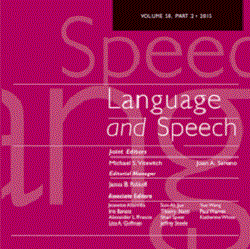Dr Tamara Rathcke from the Department of English Language & Linguistics has co-written a paper in Language and Speech.
Language and Speech is a peer-reviewed journal which provides an international forum for communication among researchers in the disciplines that contribute to our understanding of the production, perception, processing, learning, use, and disorders of speech and language.
Tamara co-wrote the article entitled ‘On the Tail of the Scottish Vowel Length Rule in Glasgow’ with Professor Jane Stuart-Smith (Glasgow University).
One of the most famous sound features of Scottish English is the short/long timing alternation of /i u ai/ vowels, which depends on the morpho-phonemic environment, and is known as the Scottish Vowel Length Rule (SVLR). These alternations make the status of vowel quantity in Scottish English (quasi-)phonemic but are also susceptible to change, particularly in situations of intense sustained dialect contact with Anglo-English. Does the SVLR change in Glasgow where dialect contact at the community level is comparably low? The present study sets out to tackle this question, and tests two hypotheses involving (1) external influences due to dialect-contact and (2) internal, prosodically induced factors of sound change.
Durational analyses of /i u ai/ were conducted on a corpus of spontaneous Glaswegian speech from the 1970s and 2000s; four speaker groups were compared, two of middle-aged men, and two of adolescent boys. The hypothesis that the development of the SVLR over time may be internally constrained and interact with prosody was largely confirmed. They observed weakening effects in its implementation which were localised in phrase-medial unaccented positions in all speaker groups, and in phrase-final positions in the speakers born after the Second World War. But unlike some other varieties of Scottish or Northern English which show weakening of the Rule under a prolonged contact with Anglo-English, dialect contact seems to be having less impact on the durational patterns in Glaswegian vernacular, probably because of the overall reduced potential for a regular, everyday contact in the West of Scotland.
Further information about the paper can be found at: http://las.sagepub.com/content/early/2015/11/20/0023830915611428.abstract

